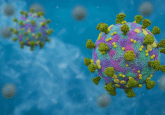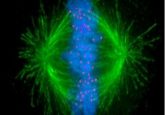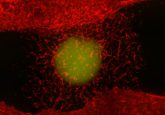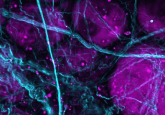3D movies of cells inside living systems made a reality
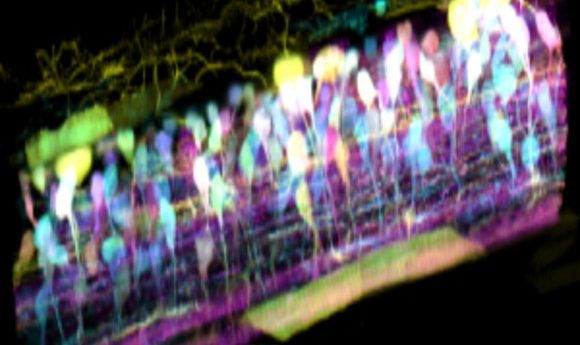
Scientists have created a microscope fast enough to track and record cells in living systems in 3D.
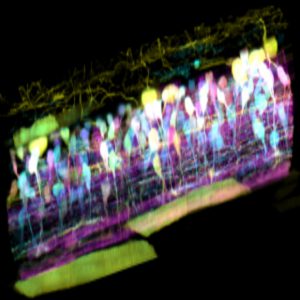
Inside the spinal cord of a zebrafish embryo, new neurons light up in different colors, letting scientists track nerve circuit development. Credit: T. Liu et al./Science 2018
A research team at the Howard Hughes Medical Institute’s Janella Research Campus (MD, USA) has combined two imaging technologies to create 3D movies of cells in their natural environment.
Scientists have been able to image living cells with microscopes for many years. However, the best images have always come from isolated cells because large groups of cells scramble light.
Team leader Eric Betzig explained, “This raises the nagging doubt that we are not seeing cells in their native state, happily ensconced in the organism in which they evolved.”
Even when the cells are viewed individually, the microscopes used are generally too slow to visualize and track the cells in 3D. These microscopes also use extremely intense light, which Betzig believes “contributes to the fear that we are not seeing cells in their natural, unstressed form”.
“It’s often said that seeing is believing, but when it comes to cell biology, I think the more appropriate question is, ‘When can we believe what we see?’”
Betzig shared the Nobel Prize for Chemistry in 2014 for his work on the development of super-resolved fluorescence microscopy. His team first published work on their combination of the two microscopy techniques in the same year.
In this new study, published in Science, Betzig’s group have made use of adaptive optics, which is the same technology used to provide clear views of distant objects in space from Earth. They combined this with lattice light sheet microscopy to sweep a thin sheet of light through the cell whilst acquiring a series of 2D images to build the high-resolution 3D movie.
The new microscope has already been used to visualize an immune cell engulfing sugar particles whilst wriggling through a zebrafish’s ear and a cancer cell rolling through a blood vessel attempting to stick to the vessel wall.
The next move for the researchers is to ensure the microscope is affordable and user friendly. Currently it fills a 10ft long table; however, the team is now working towards ensuring the microscope is affordable to research labs and can fit onto a small desk.
